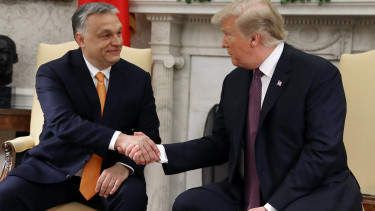EMA starts rolling review of another COVID-19 vaccine

The CHMP’s decision to start the rolling review is based on preliminary results from laboratory studies (non-clinical data) and early clinical studies in adults.
These studies suggest that the vaccine triggers the production of antibodies and immune cells that target SARS-CoV-2, the virus that causes COVID‑19.
The company is currently conducting trials in people to assess the vaccine’s safety, immunogenicity (how well it triggers a response against the virus) and effectiveness against COVID-19.
EMA will evaluate data from these and other clinical trials as they become available.
The rolling review will continue until enough evidence is available for a formal marketing authorisation application.
EMA will assess the vaccine’s compliance with the usual standards for effectiveness, safety and pharmaceutical quality. While EMA cannot predict the overall timelines, it should take less time than normal to evaluate an eventual application because of the work done during the rolling review.
What is a rolling review?
A rolling review is a regulatory tool that EMA uses to speed up the assessment of a promising medicine during a public health emergency. Normally, all data on a medicine’s or vaccine’s effectiveness, safety and quality and all required documents must be ready at the start of the evaluation in a formal application for marketing authorisation . In the case of a rolling review, EMA’s human medicines committee (CHMP) reviews data as they become available from ongoing studies. Once the CHMP decides that sufficient data are available, the company can submit a formal application. By reviewing the data as they become available, the CHMP can reach an opinion on the medicine’s authorisation sooner.
During the rolling review, and throughout the pandemic, EMA and its scientific committees are supported by the COVID-19 EMA pandemic task force (COVID-ETF). This group brings together experts from across the European medicines regulatory networkto advise on the development, authorisation and safety monitoring of medicines and vaccines for COVID-19 and facilitate quick and coordinated regulatory action.
How is the vaccine expected to work?
Like other vaccines, CVnCoV is expected to prepare the body to defend itself against infection with COVID-19.
The SARS-CoV-2 virus uses proteins on its outer surface, called spike proteins, to enter the body’s cells and cause COVID-19. CVnCoV contains a molecule called messenger RNA (mRNA) which has instructions for making the spike protein. The mRNA is contained in tiny particles of fats (lipids) that prevent it from being broken down too quickly.
When a person is given the vaccine, some of their cells will read the mRNA instructions and temporarily produce the spike protein. The person’s immune system will then recognise this protein as foreign and produce antibodies and activate T cells (white blood cells) against it.
If, later on, the person comes into contact with SARS-CoV-2 virus, their immune system will recognise the protein and be ready to defend the body against the virus.
The mRNA from the vaccine does not stay in the body but is broken down shortly after vaccination.
Background
The use of CureVac's vaccine requires a final approval by the European Commission on a positive recommendation by the EMA.
The EMA has so far recommended for use COVID-19 vaccines developed and manufactured by US-based Pfizer and Germany's BioNTech, by US biotech company Moderna, and by AstraZeneca and Oxford University.
The EMA is expected to give its approval to the one-shot COVID-19 vaccine developed by US pharmaceutical company Johnson & Johnson by March, the Managing Director of Janssen Italia, part of the J&J group, said on Wednesday.
A week ago, the leaders of Denmark, Austria, the Czech Republic and Greece urged European Commission President Ursula von der Leyen in a letter to act quickly to secure supplies of the COVID-19 vaccine developed by J&J, after they had been informed that the new vaccine needed to be shipped to the United States for filling and finishing.
The EU executive also concluded exploratory talks with Novavax and Valneva.
In mid-November, the Commission approved a fifth contract with the European pharmaceutical company CureVac, which provided for the initial purchase of 225 million doses on behalf of all EU Member States, plus an option to request up to a further 180 million doses, to be supplied once a vaccine has proven to be safe and effective against COVID-19.







